Chiang Mai trekking: the Mae Taeng River valley
Chiang Mai is known as one of the best places in Thailand from which to take a trek, and we knew from the start that we wanted to do a hike and homestay. By luck we ended up going on a trek with a fantastic local trekking company, Libra Tours (www.librahousechiangmai.com). It was a highlight of Thailand, maybe even my favorite thing we did.
The reason Chiang Mai is known for trekking is that north of the city is a collection of dense forests, with fast rivers running through steep valleys and over waterfalls. Too rough to be built up, the area remains only lightly populated and much of the population lives in what are called “minority villages.” These are villages where the residents are not ethnically Thai and as a result have different traditions and haven’t blended into the national fabric as easily as ethnic Thais. The result, for trekkers, is an otherworldly experience deep in the jungle, where you feel as though the outside world is a million miles away.
We got lucky with our trekking company. Nearly every tour operator and hotel in Chiang Mai sells the same tours, even using identical brochures and laminated info sheets. But our night bus into Chiang Mai arrived at 5am, and our hostel was not yet open. So we sat at the only open spot on the street, Libra Guesthouse. As we waited for our hostel to open we talked to a number of other backpackers entering and leaving Libra, all of whom loved the tours. When it came time a few days later to book our own tour, we went back. They provide just what we were looking for – small, authentic tours of the jungle and villages, run by the family without any tour middlemen. It was fantastic, highly recommended if you’re headed to Chiang Mai.
We started out driving north. (with our tour partners, a fun couple from Australia) in the backseat of what’s known in Chiang Mai as a “red truck” – basically a tuk tuk with two benches in the back, facing each other . We held on for our lives as the truck raced down the roads and we attempted to keep ourselves and our luggage inside the truck. But so fun. We first stopped at a local hot springs, which was a fun way to start the trek.
Next, to a waterfall.
After that, the easy part was over and we finally set out on the trek. We had two guides, one of whose family is from one of the minority villages. He was great at explaining the land and the traditions of the local villages, and seemed to know most of the locals we passed on the trail.
The trail itself varied immensely. At times we were wondering without a path in open forests;
Other times we were on a small trail in dense trees
And sometimes we took dirt roads. The trail was rough for walking, but that didn’t faze the locals, who drove motorbikes over the thin, rocky trail.
The views were beautiful.
A small tradition I found interesting was that in northern Thailand is is good luck to place leaves or rocks on anthills. We saw piles like these on the top of every anthill we crossed, much like the small rock towers that Western hikers would create to mark a path.
After a few hours we stopped in our first village. It was small, perhaps no more than 20 houses, perched on the side of a mountain. All the houses were built on stilts, with animals roaming freely around the villages. Crops, such as banana trees and rice fields, dotted the mountainside and the small valley below. It was a beautiful, very peaceful spot.
We soon had to leave in order to reach the next village by nightfall. Again the trail passed over gorgeous mountain passes, and through jungle. We arrived at the village, where we would sleep, just as night fell. The village was small and nearly abandoned, we were told as part of an effort by the government to move residents out of the national park. But that made it perfect for us – we slept in an abandoned house that had been repurposed as a dorm for trekkers.
The town was located at a bend in the Mae Taeng River, a beautiful setting with trees and foliage visible in every direction. After dinner we lit a traditional fire wish lantern and gathered around the fire with the villagers for a few hours of shared stories and drinks of god-knows-what local liquor. It was fun to see the hot air work its magic on the lantern as it took off over our heads.
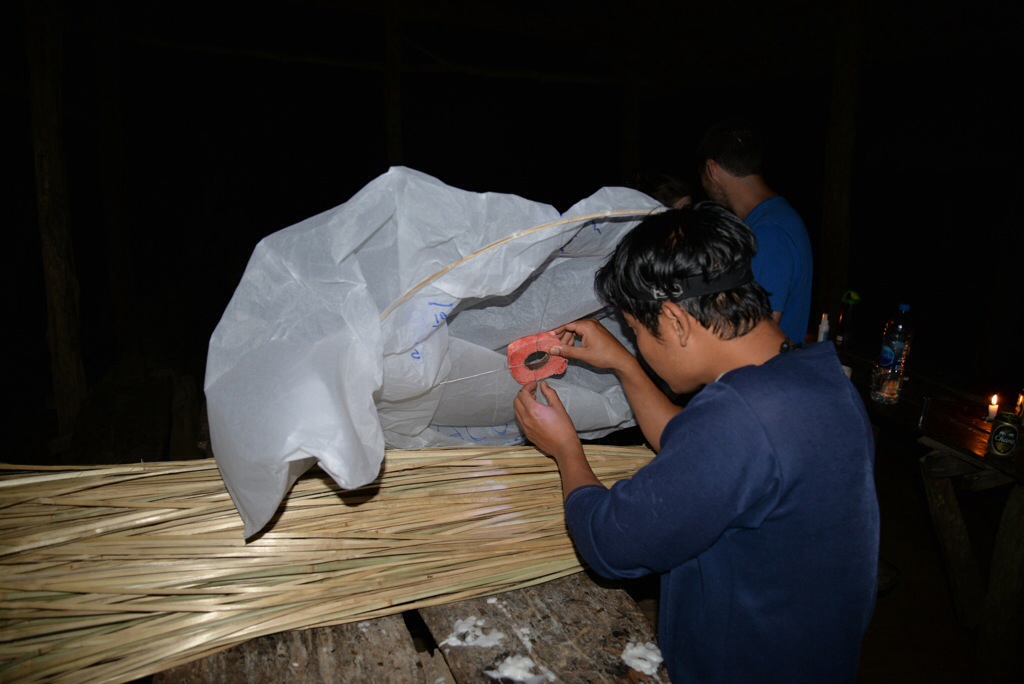
A Thai tradition for good luck, the lantern is covered with wishes for the future, than a flame source attached…
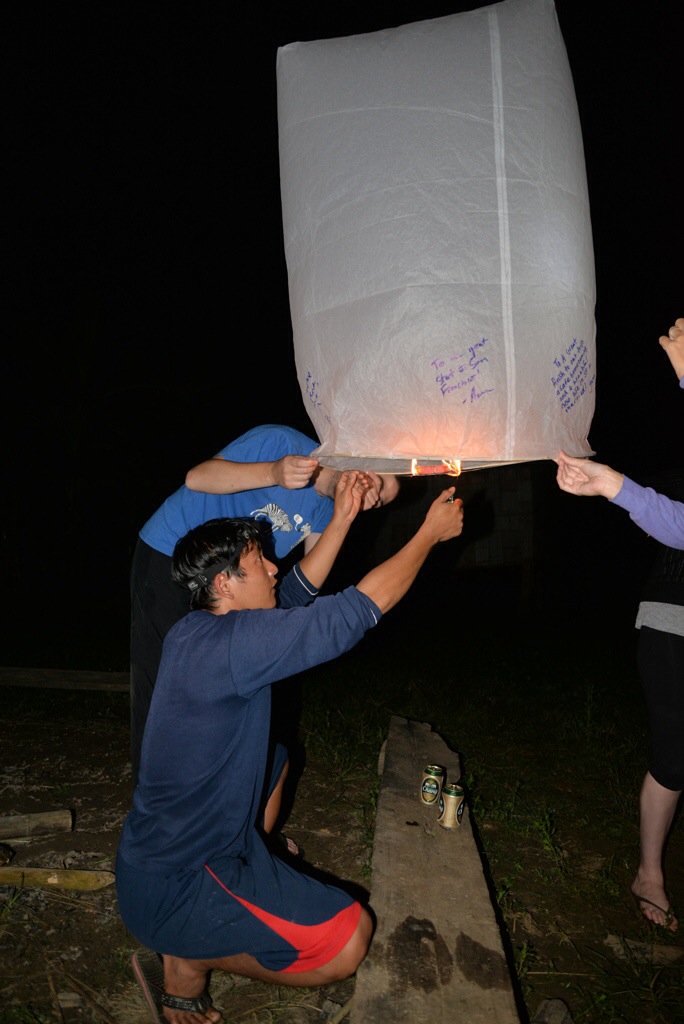
and then the balloon held long enough for the air to get just hot enough to fly (in our case, the flame source needed some extra help from a lighter)
In the morning, we awoke to the sound of elephants! One of the villagers owns a pair of elephants that spend most of their time in the wild. Hesitant about any involvement with elephants and tourists after the things we had read and the cruel treatment we saw in Nepal, but these elephants seemed much different. No metal poles, no sharp sticks, no slaps to the head. The owner simply carried a small cane like a cattle rancher and used verbal commands to get the elephants to follow him. Most of the trip he was far away from us. In fact, in order for us to ride the elephants, the owner had to go out into the forest to find the elephants, as they freely roam the forest on most days.
Unlike our other elephant experiences, this was magical. No harsh commands; no driver: just us and and elephants walking through a jungle with nobody else around for miles.
The elephants only took us so far, at some point we got off them and transferred to a bamboo raft for the rest of the trip down the river. This was a legitimate bamboo raft – we watched it being lashed together that morning by our guide and a resident of the village.
It was immensely satisfying and relaxing to slowly float down the river, surrounded by tall walls of trees and rocks. Our intrepid guide even managed to catch a few fish when fly-fishing while piloting the boat.
They let me try to steer for a while, but I thought it was the usual “tourist help” opportunity where nothing I could do could mess the craft up. Quickly learned that wasn’t true as they shouted at me when I messed up our approach to some small rapids.
After all that, our final section of the trek in whitewater rafts seemed almost tame and too commercial, but it was still a fun way to end a great two days in the Thai jungle.

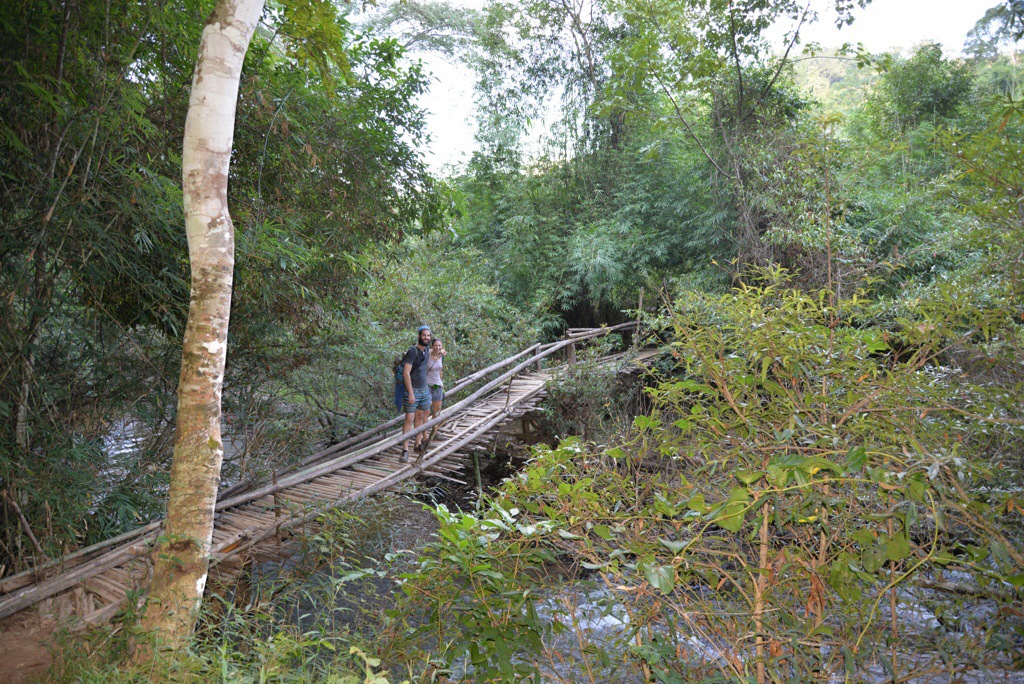
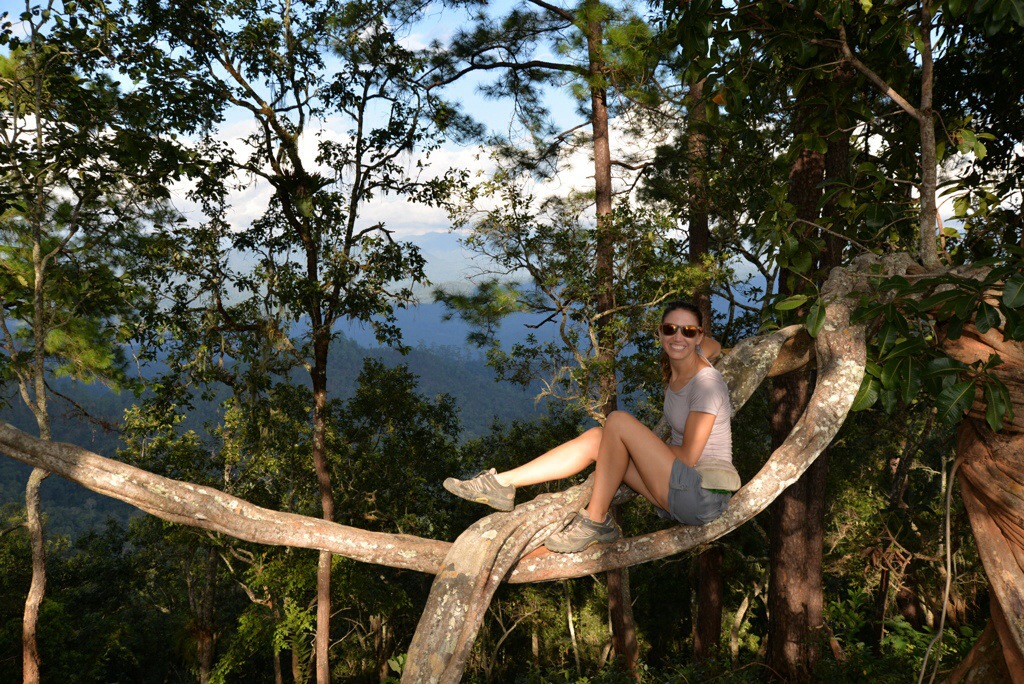
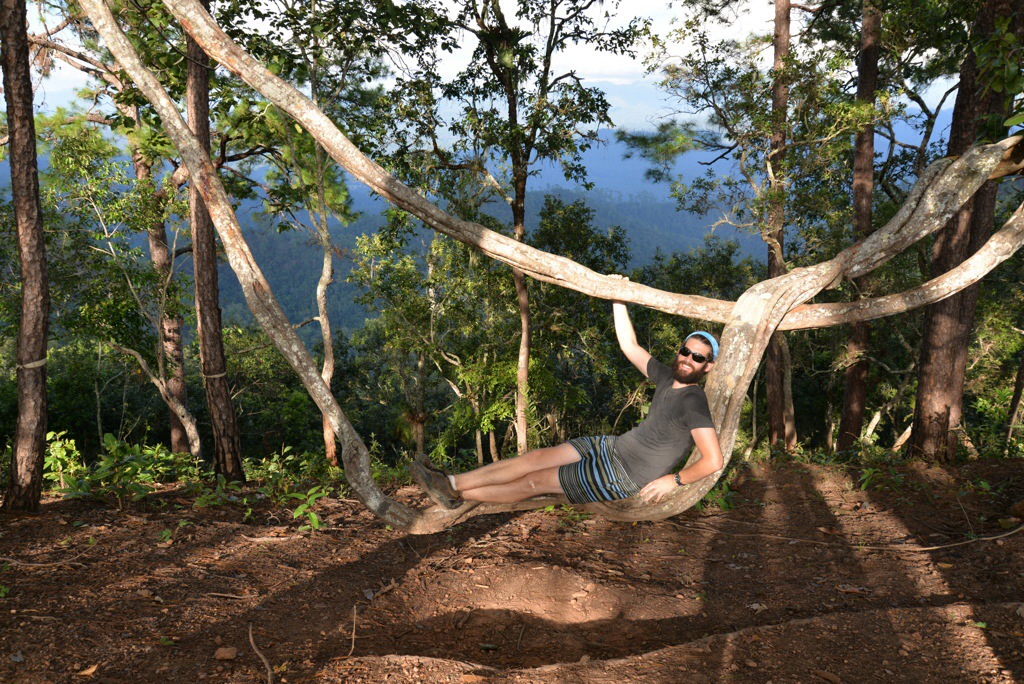
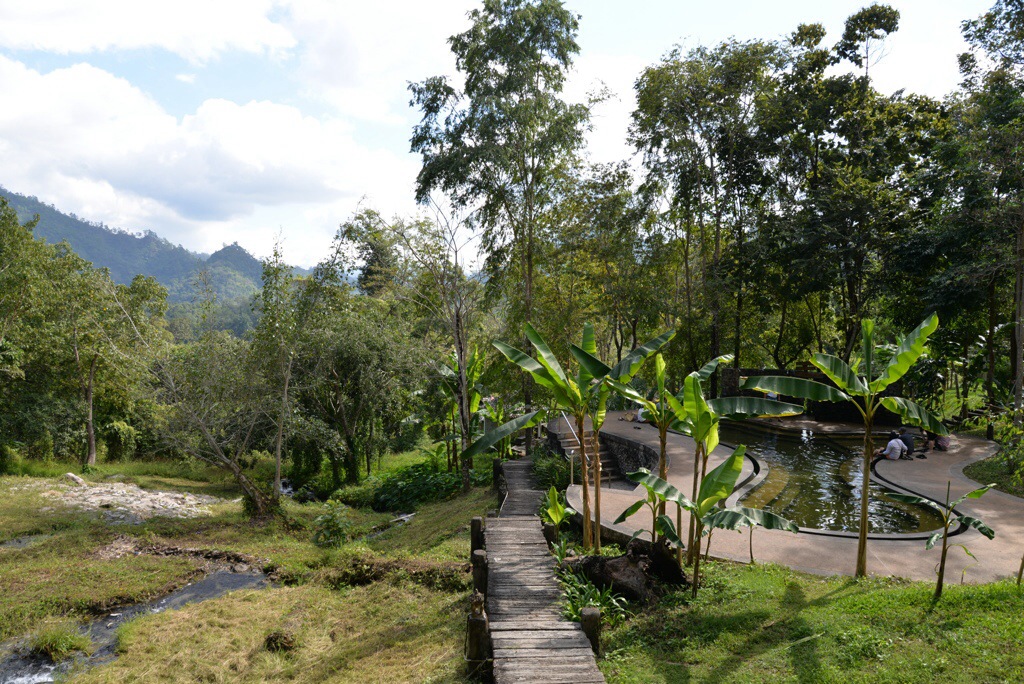
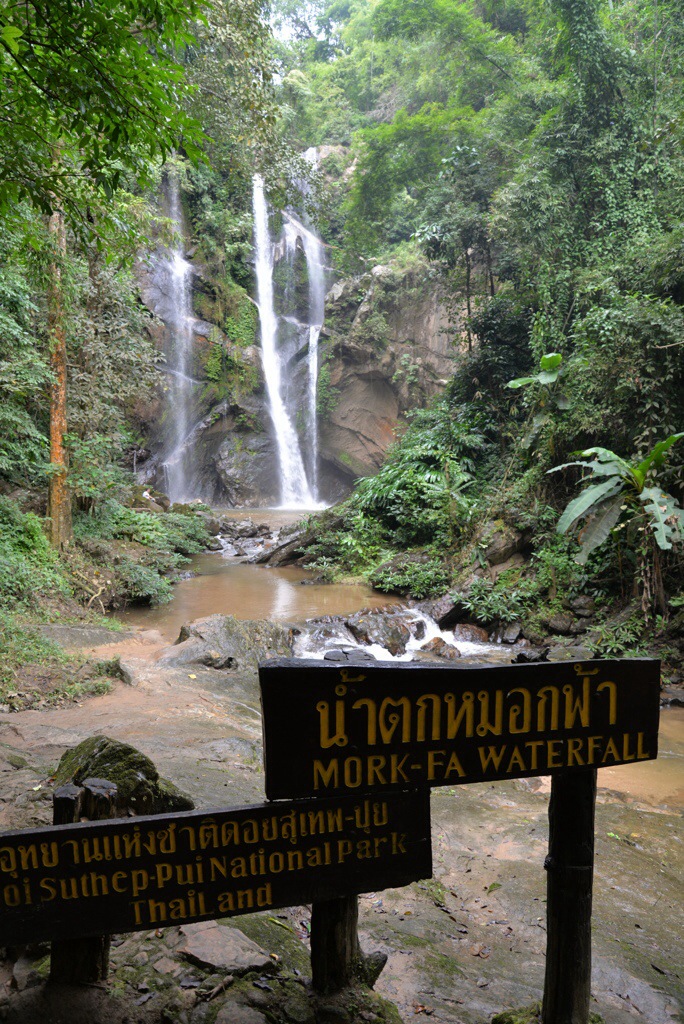
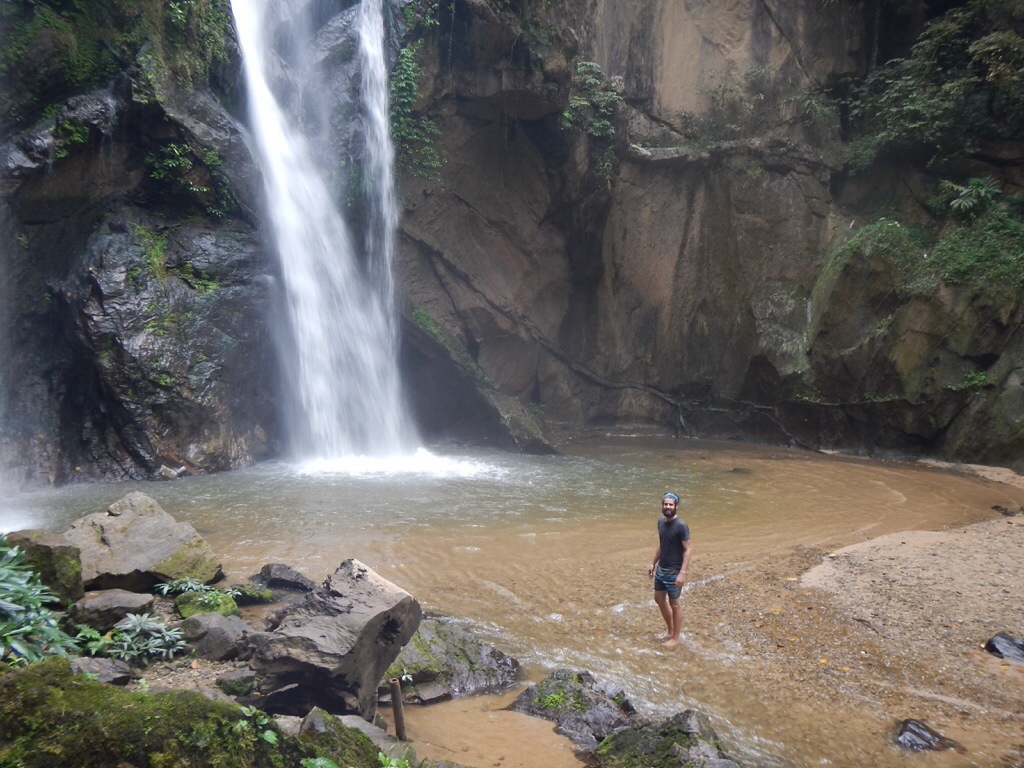
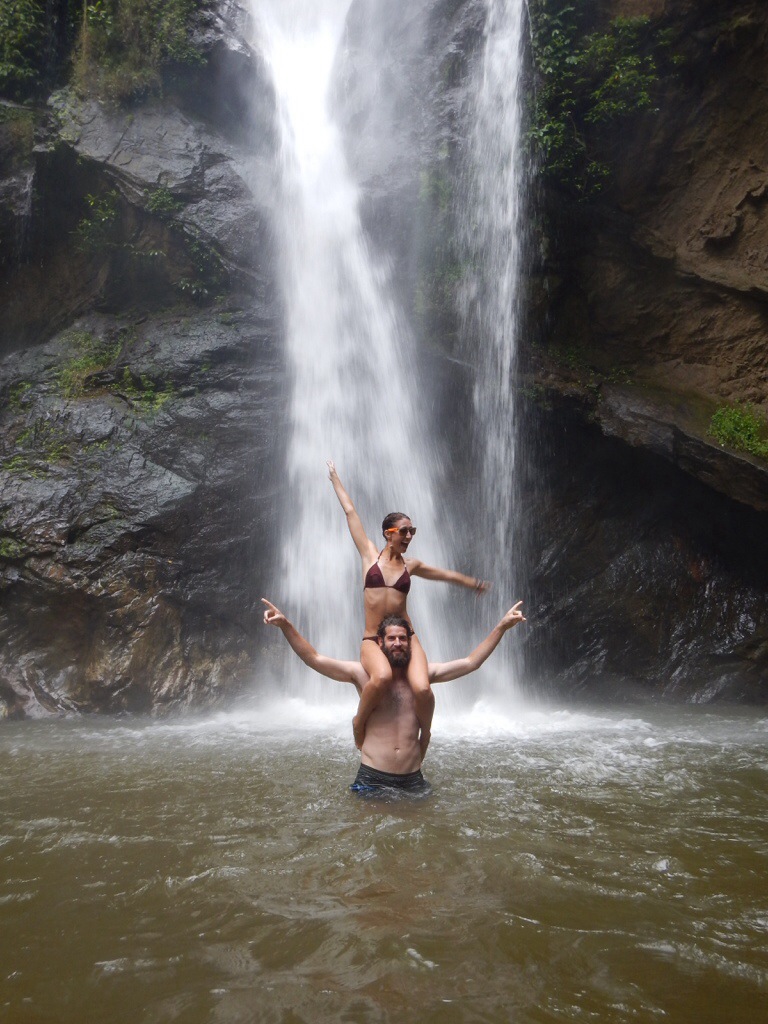
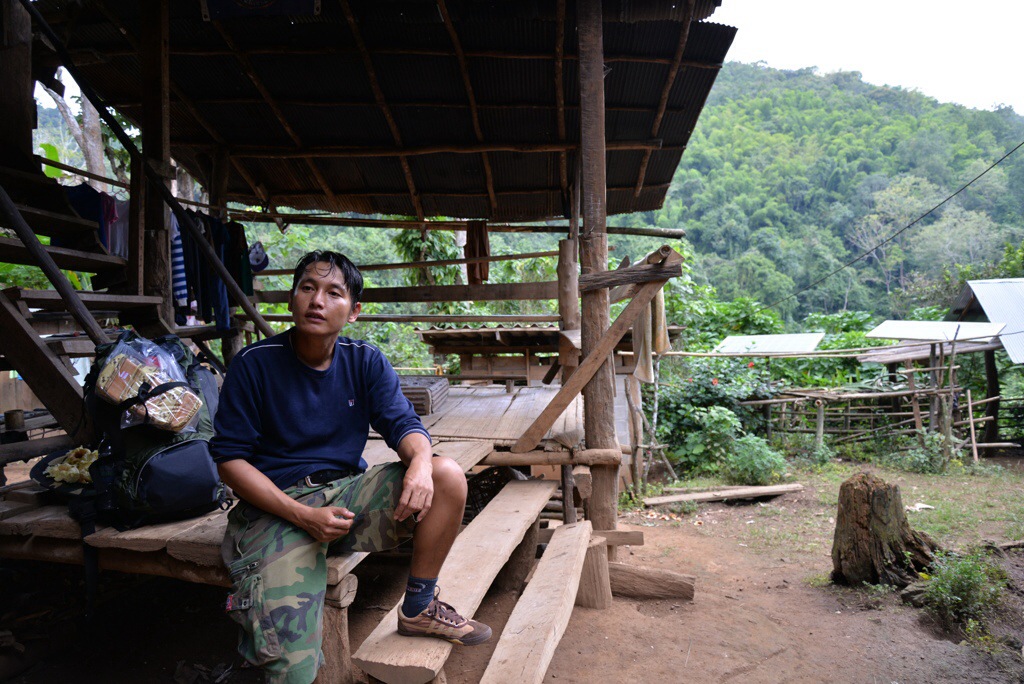
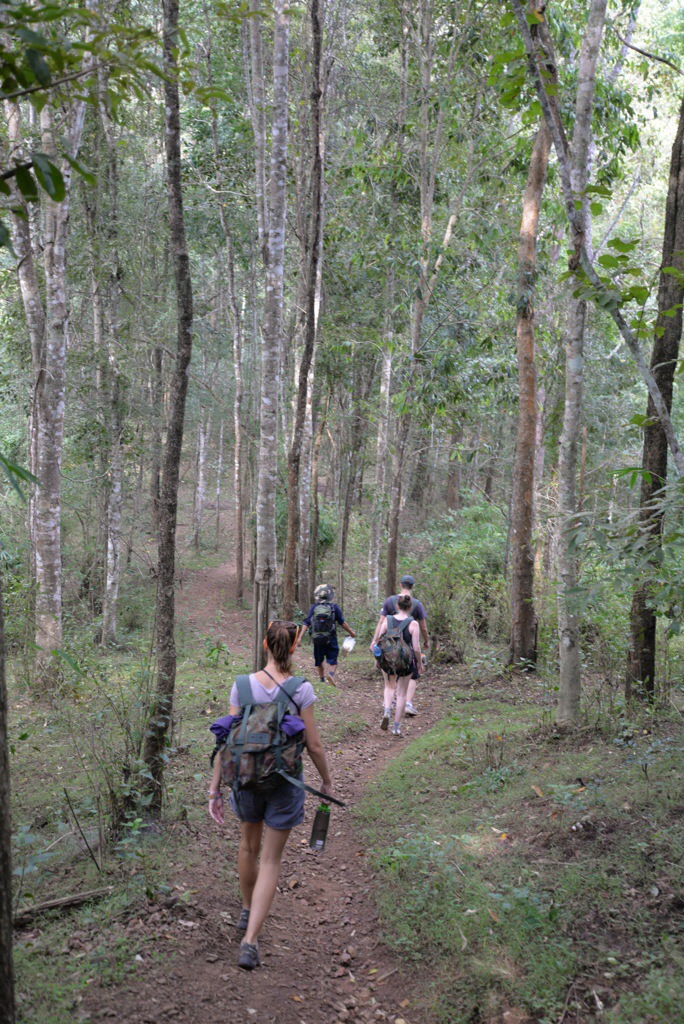
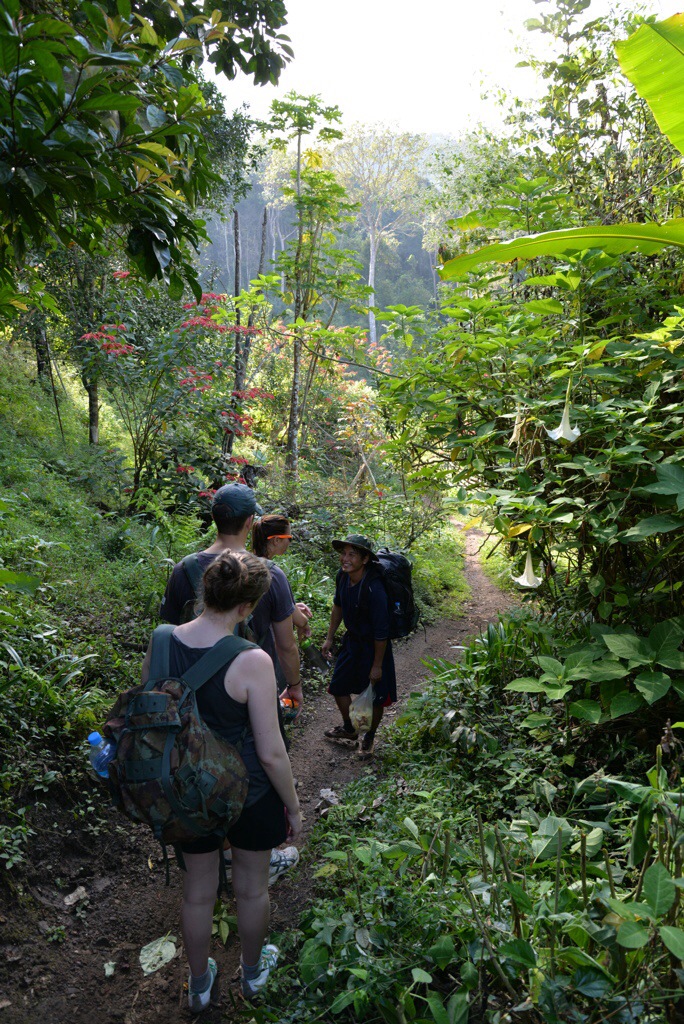
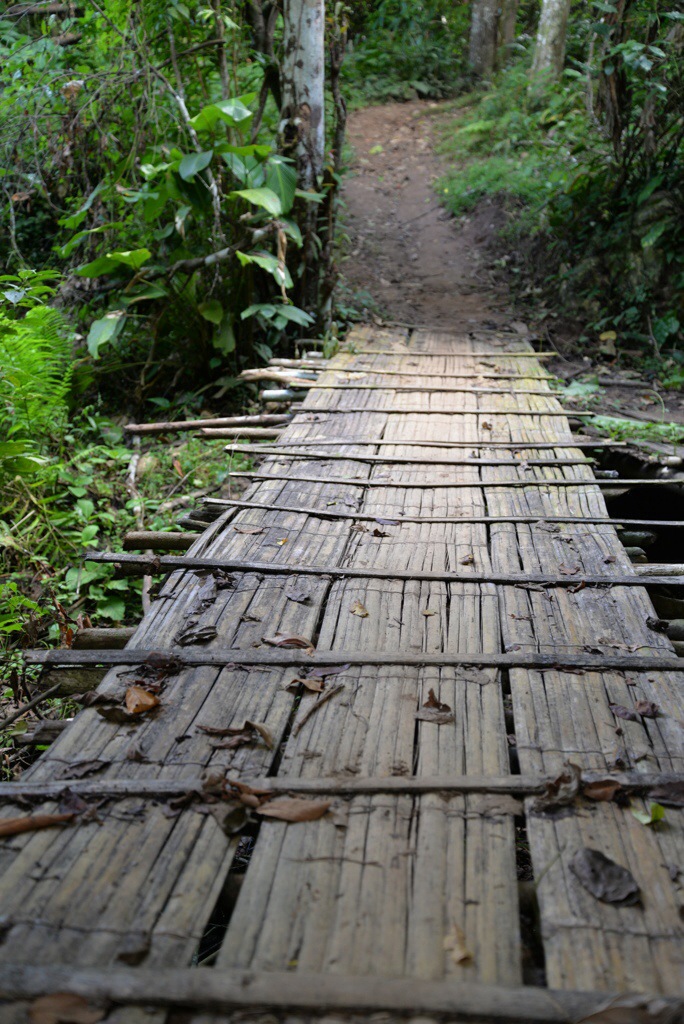
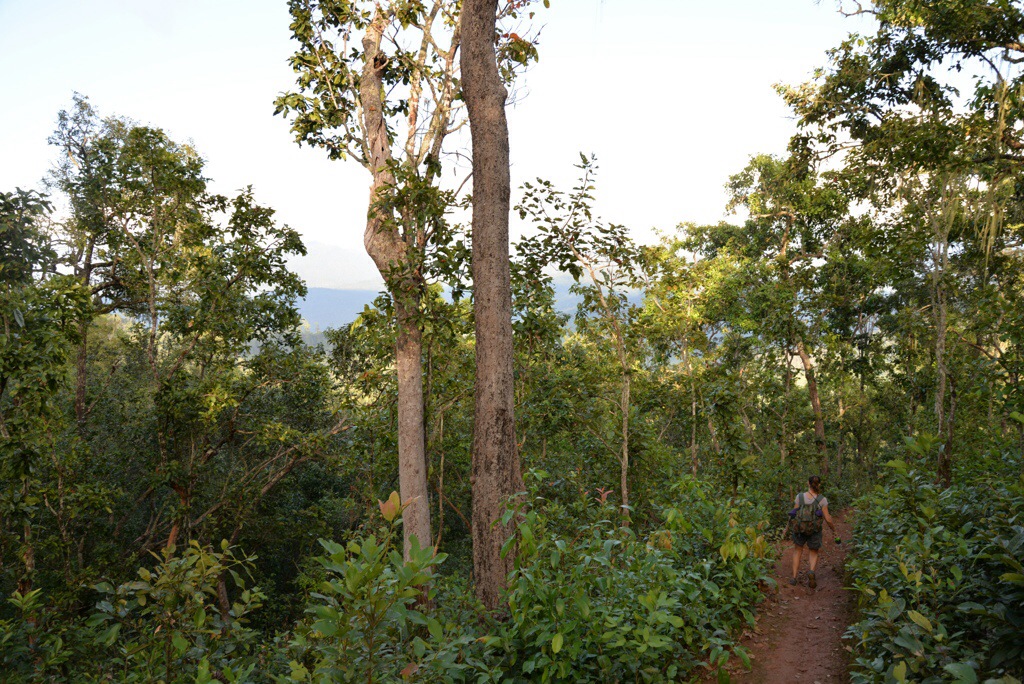
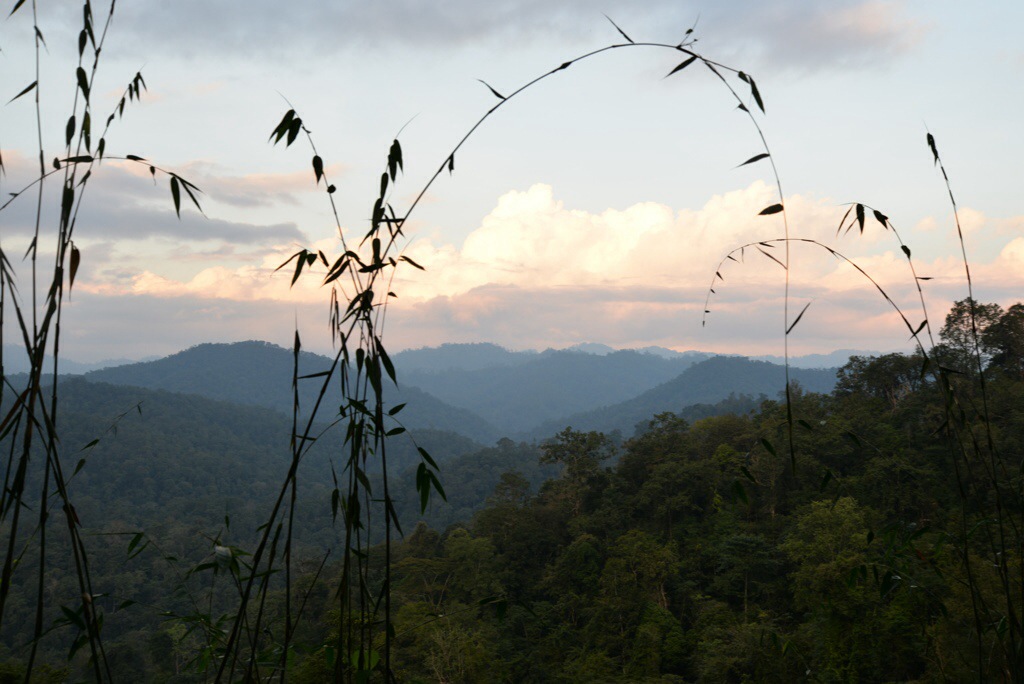
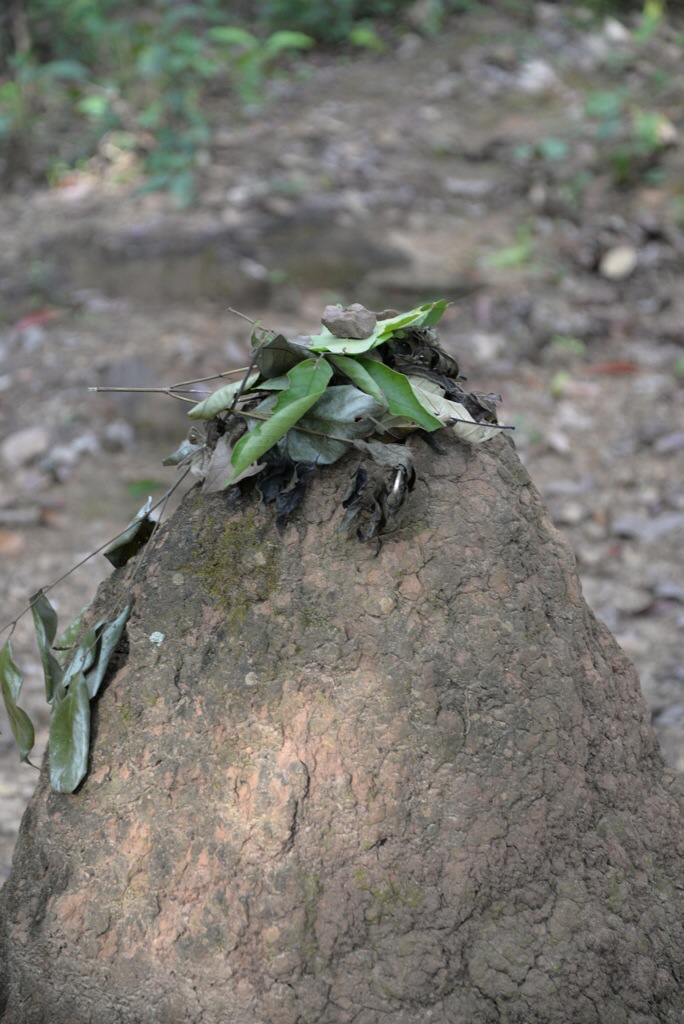
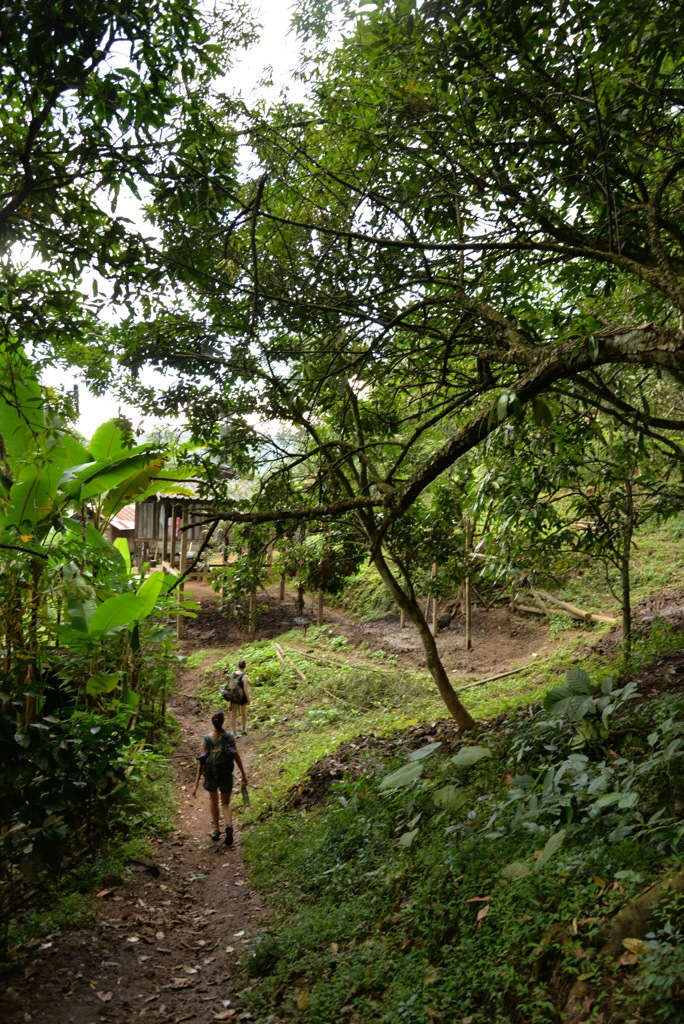
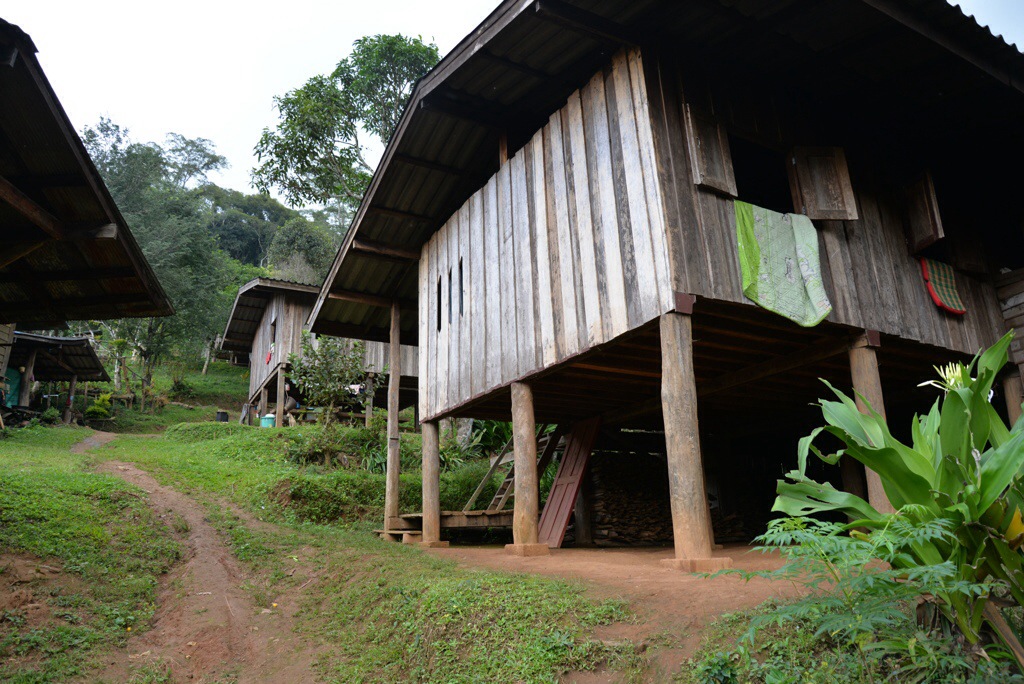
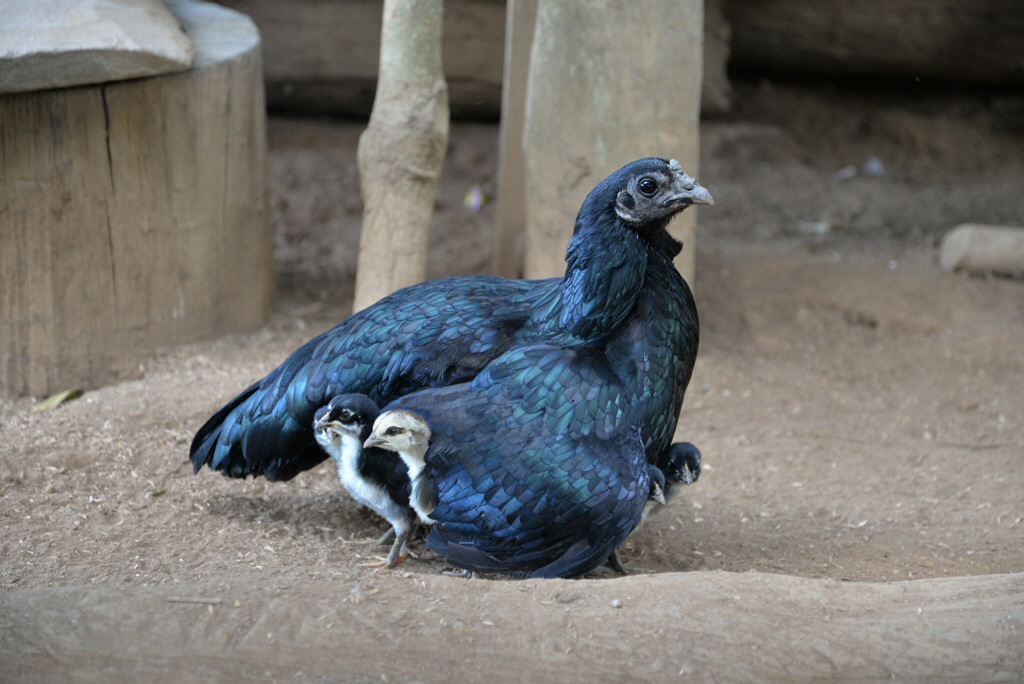
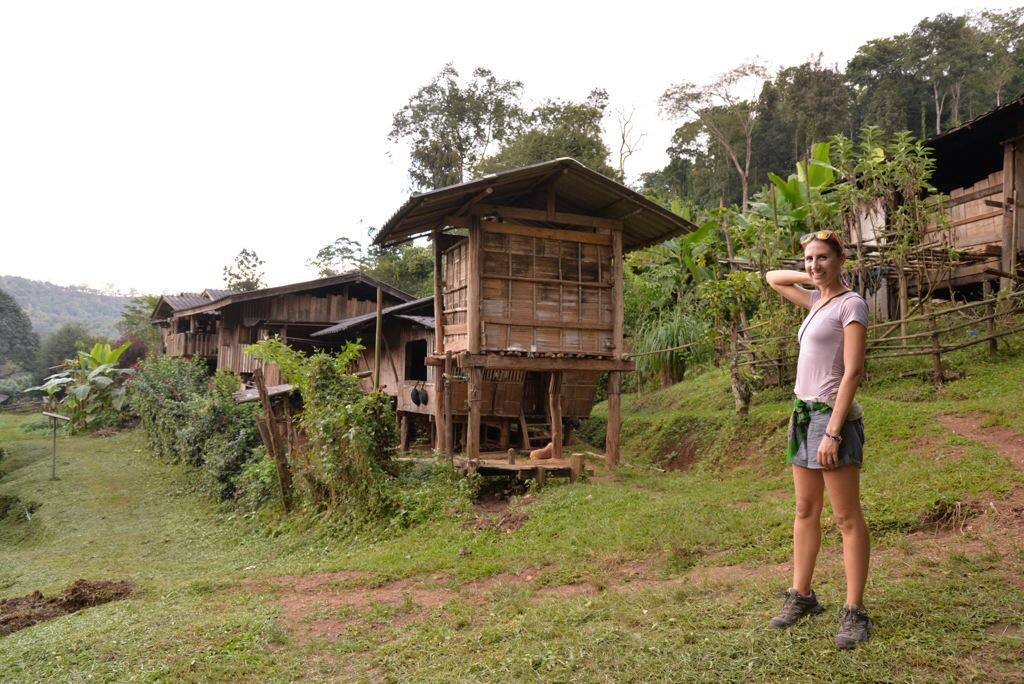
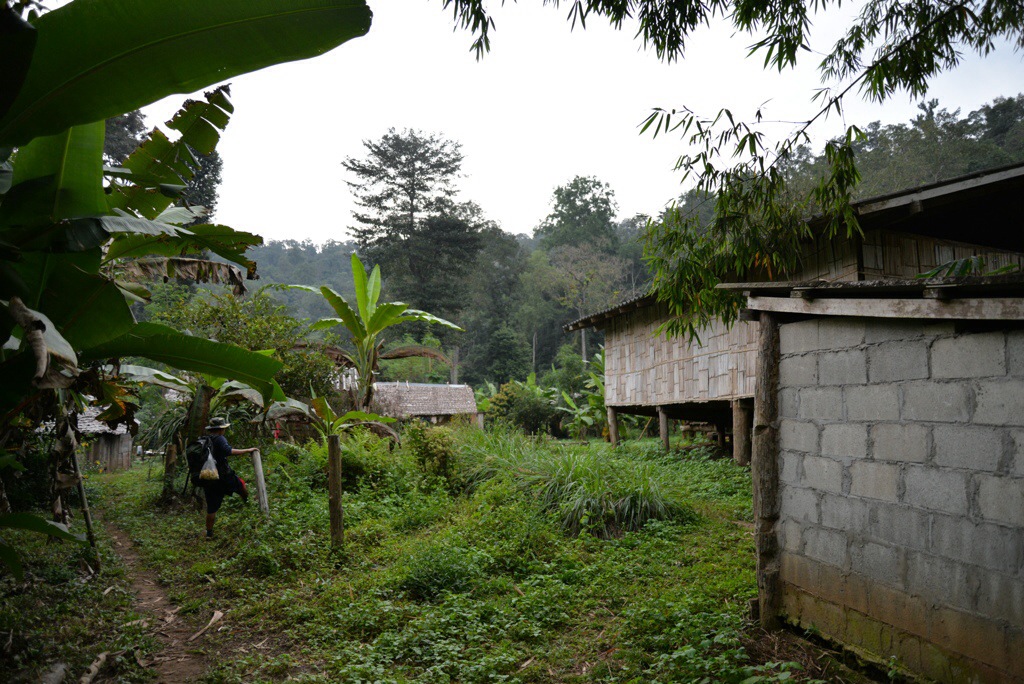
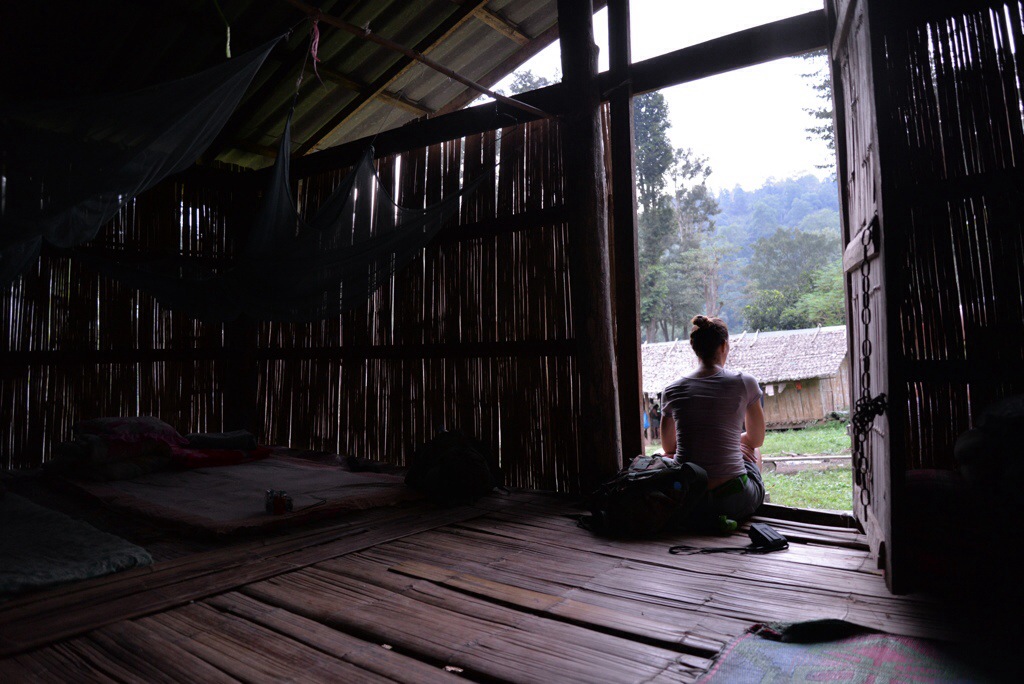
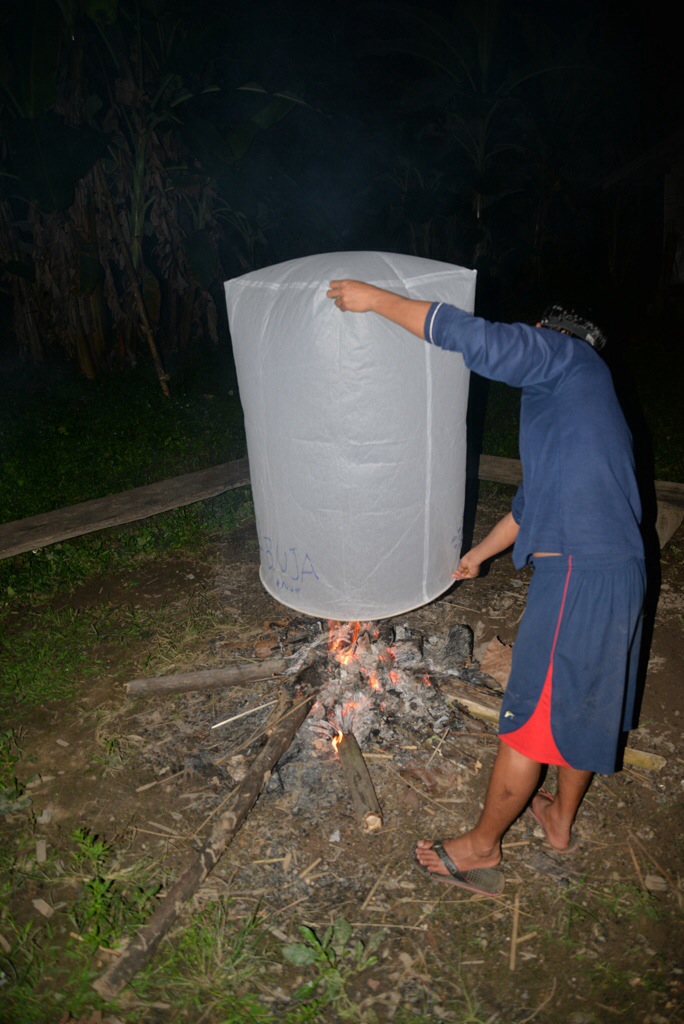
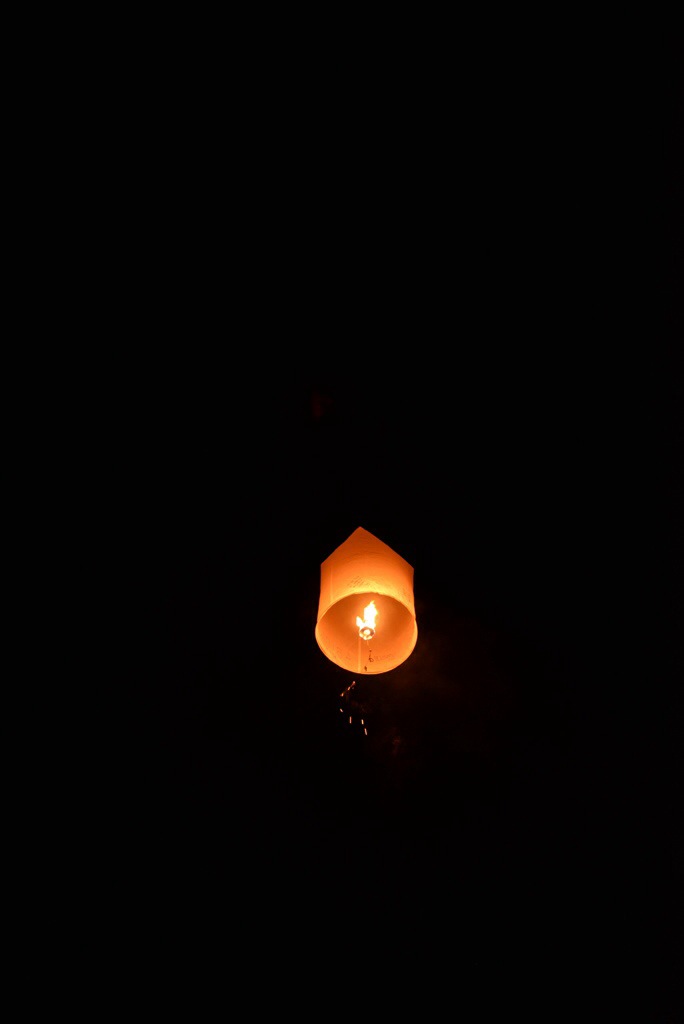

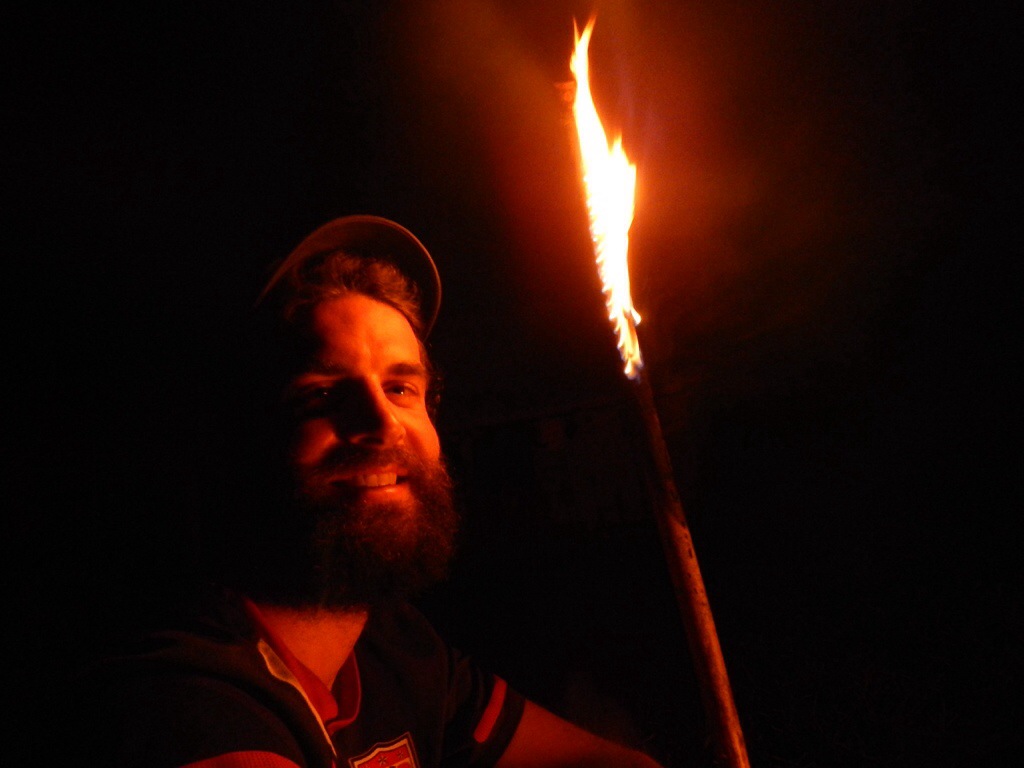
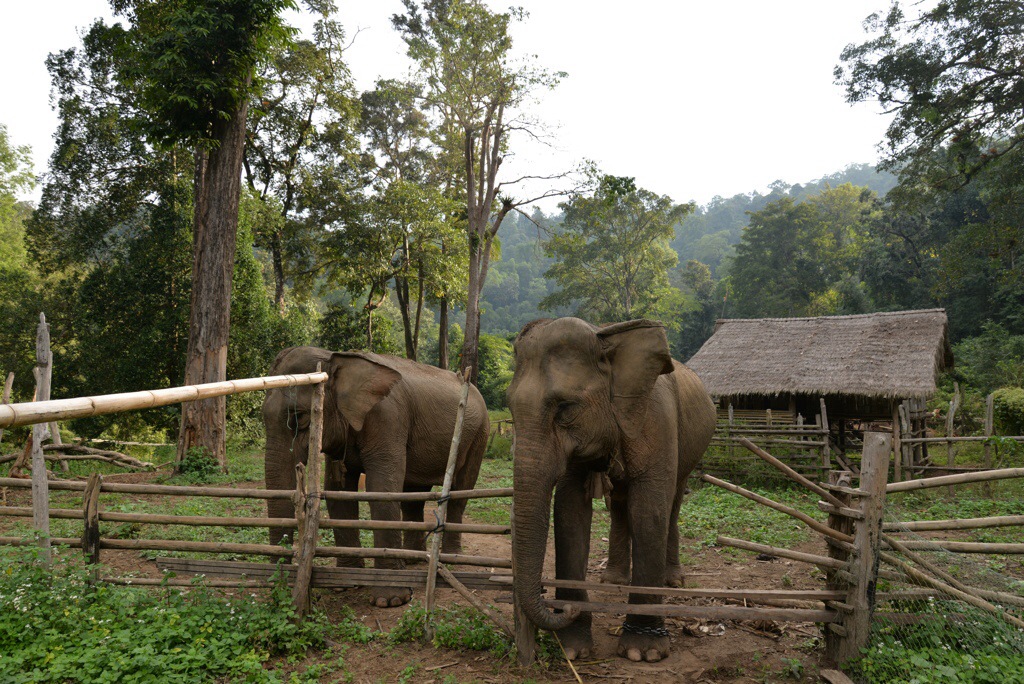
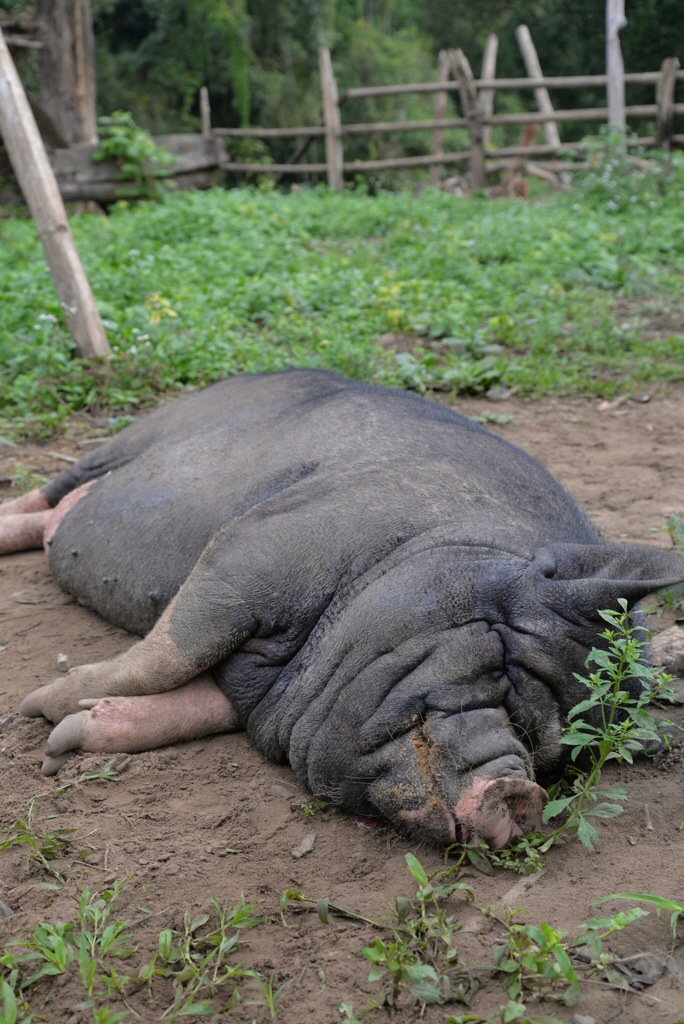
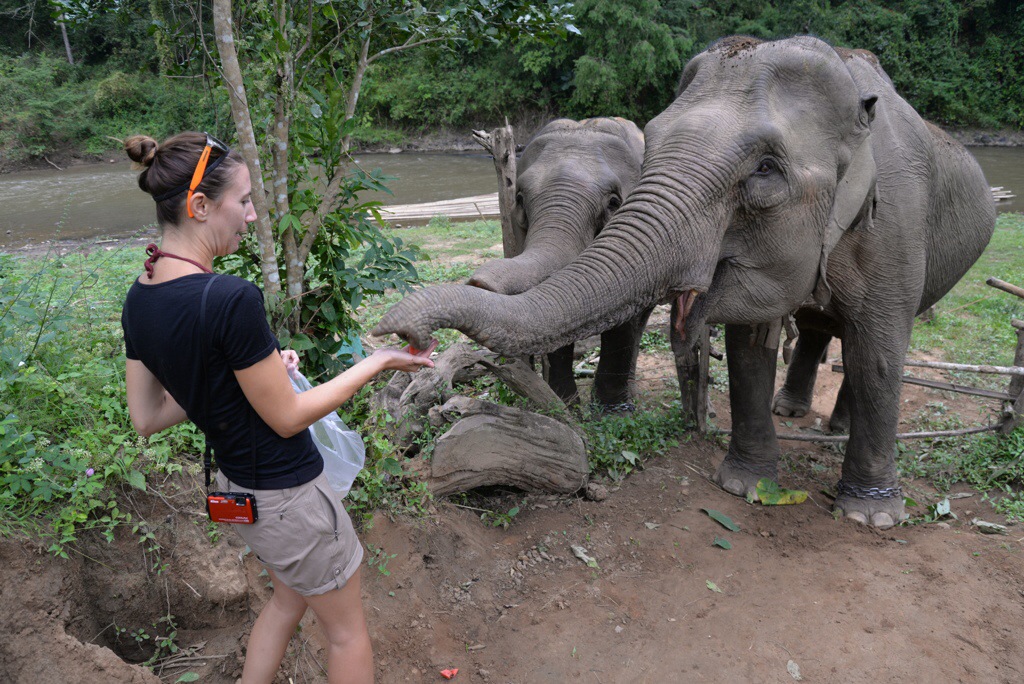
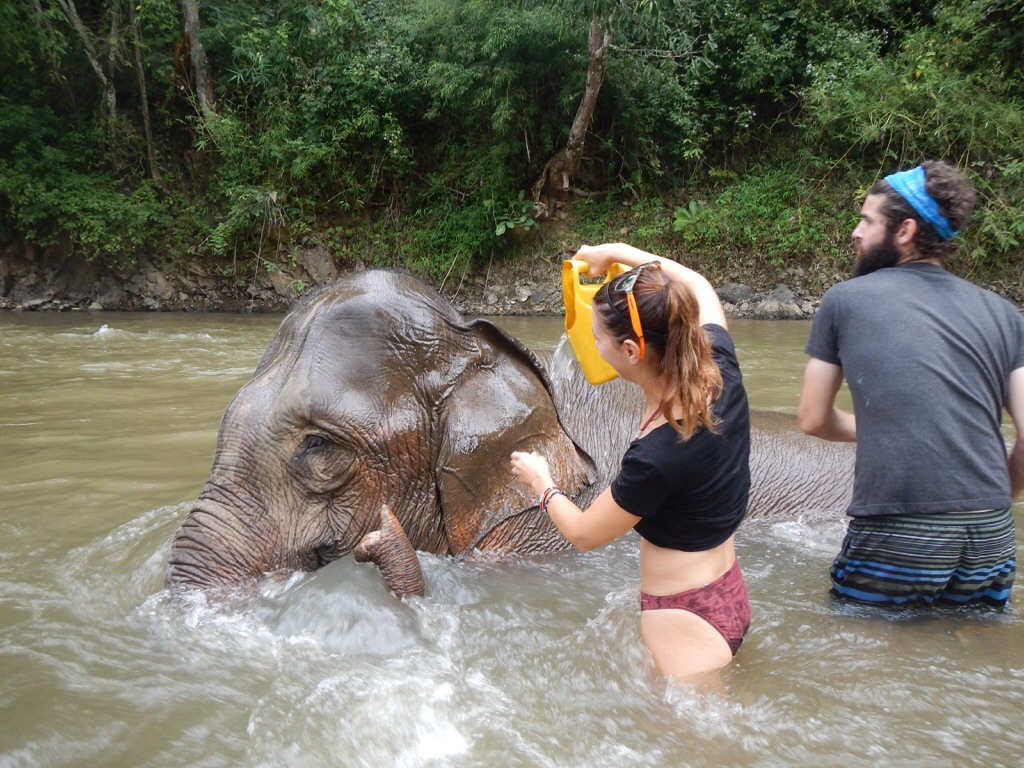
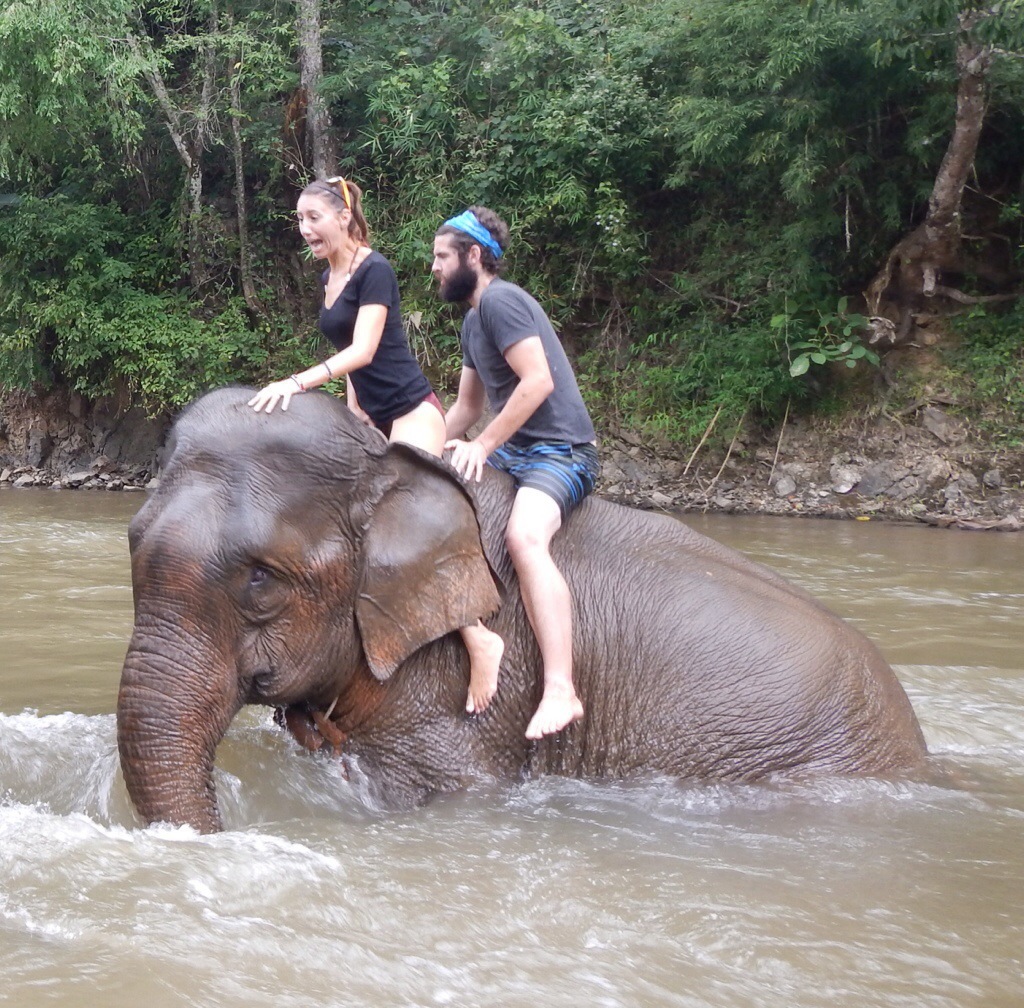
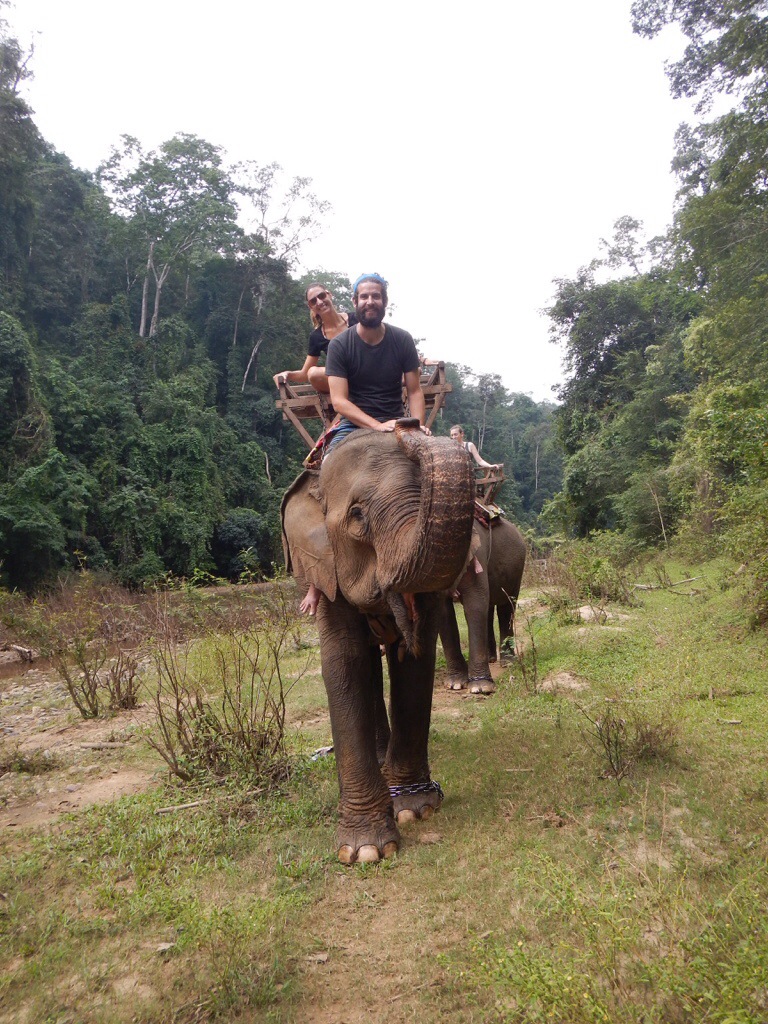
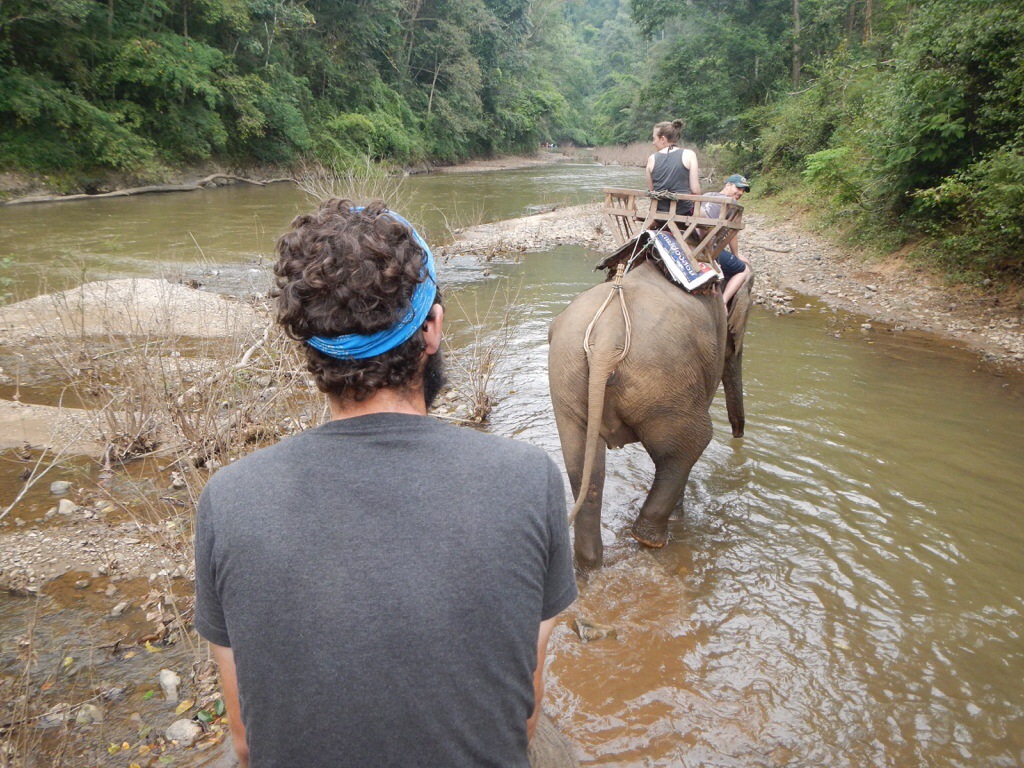
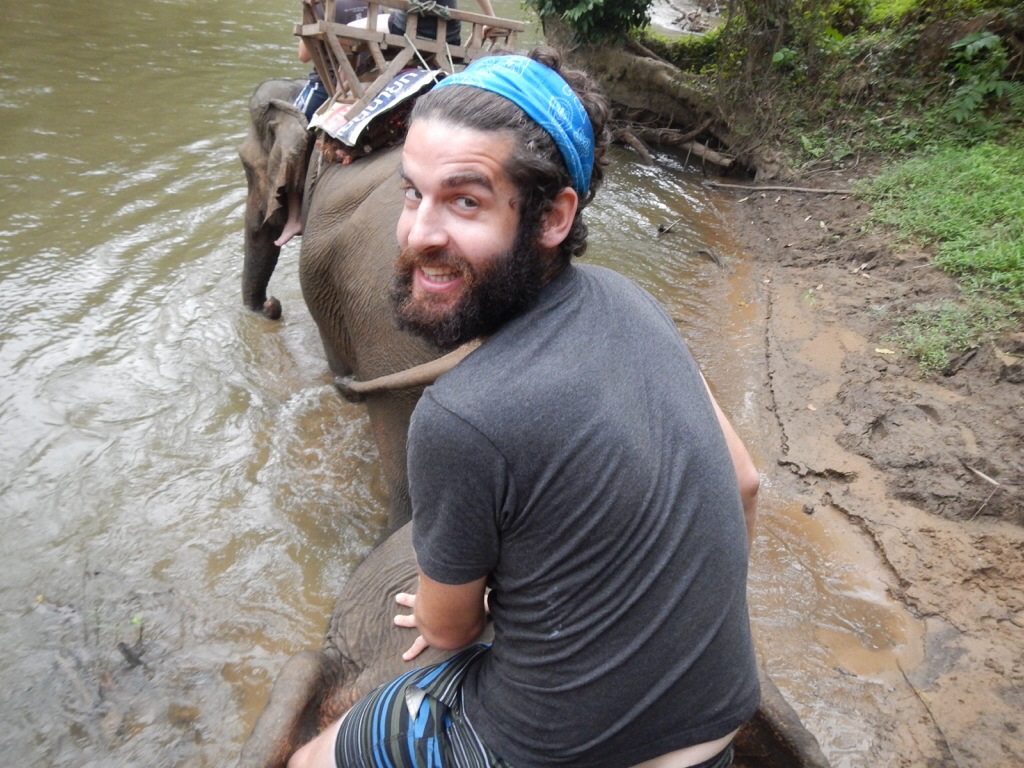
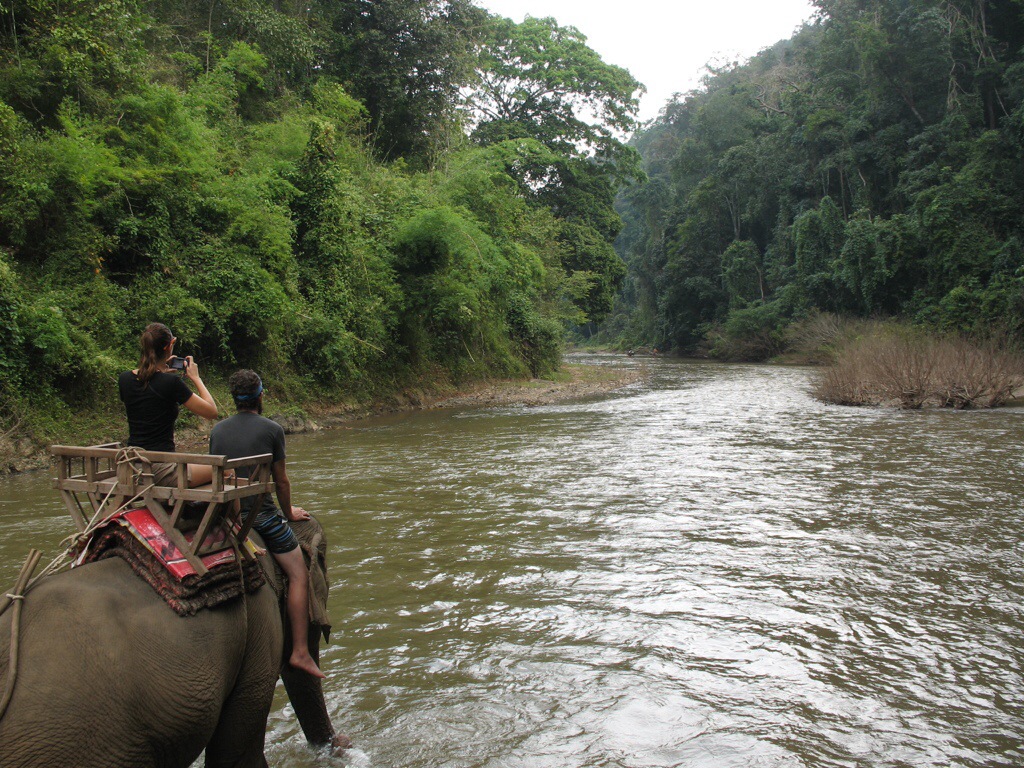
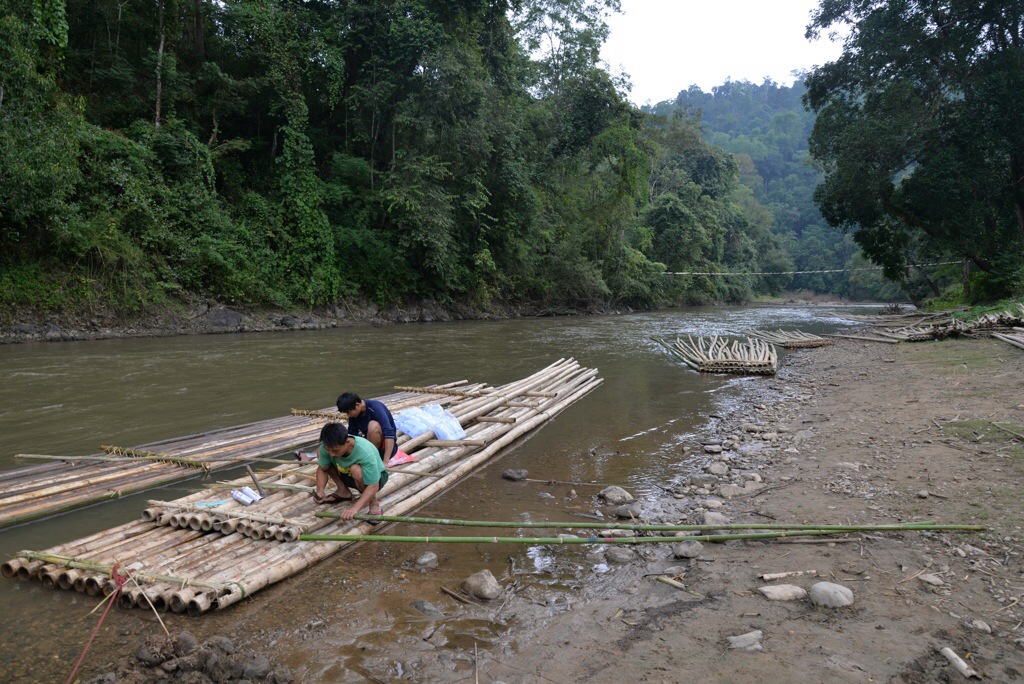
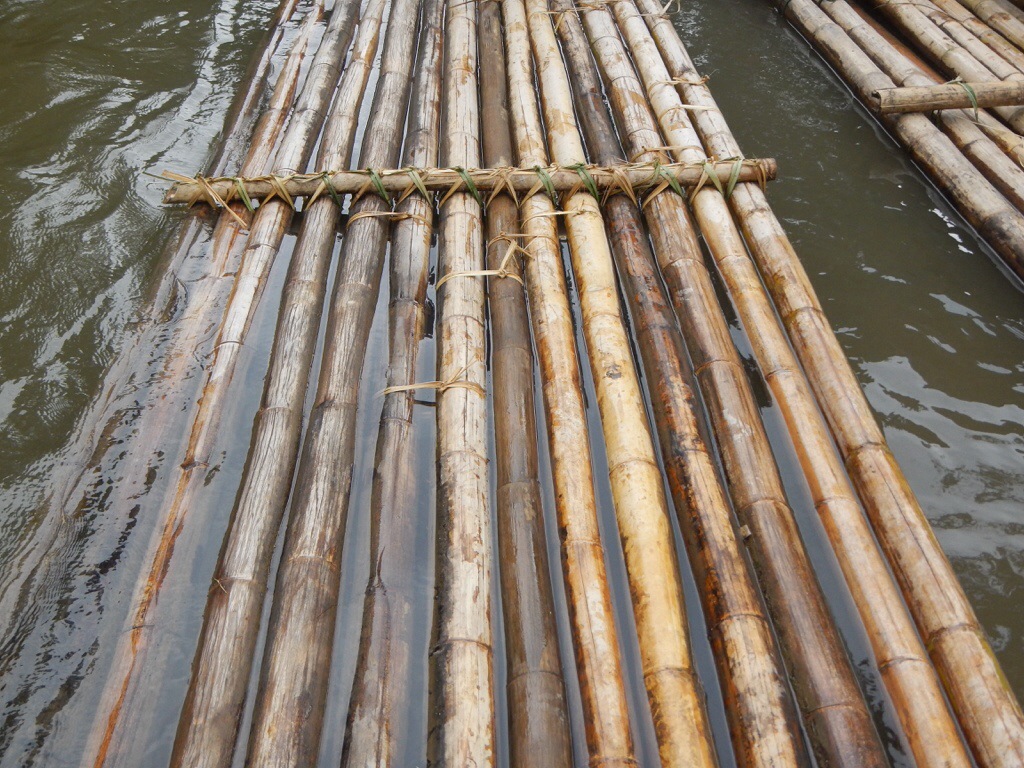
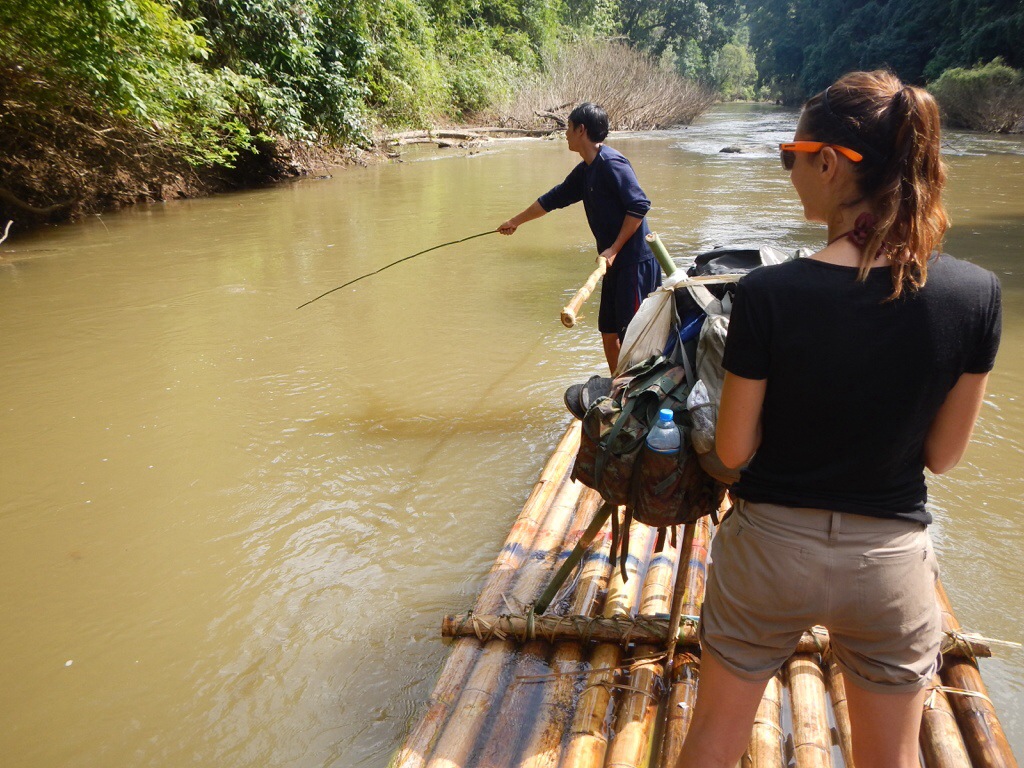
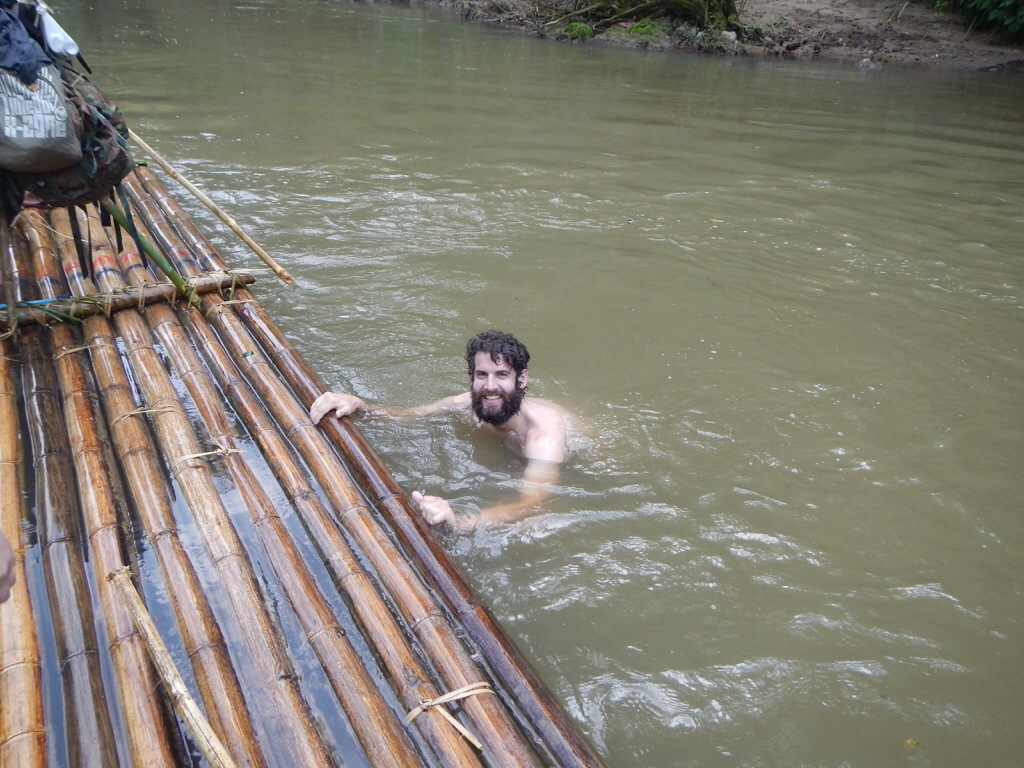
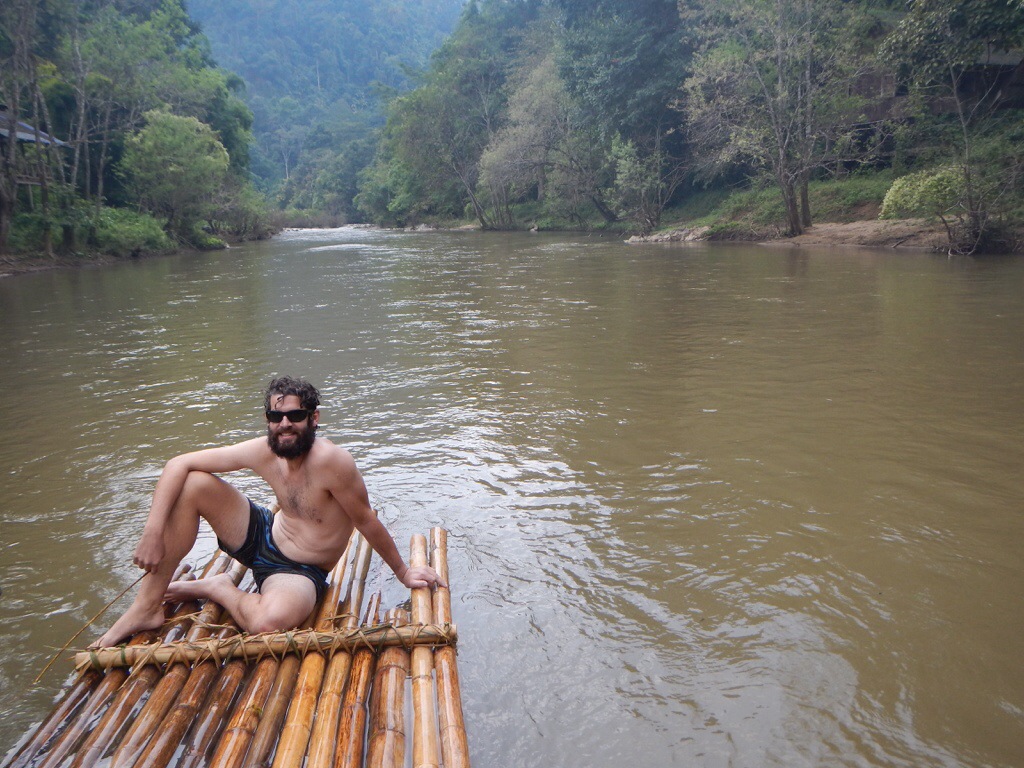
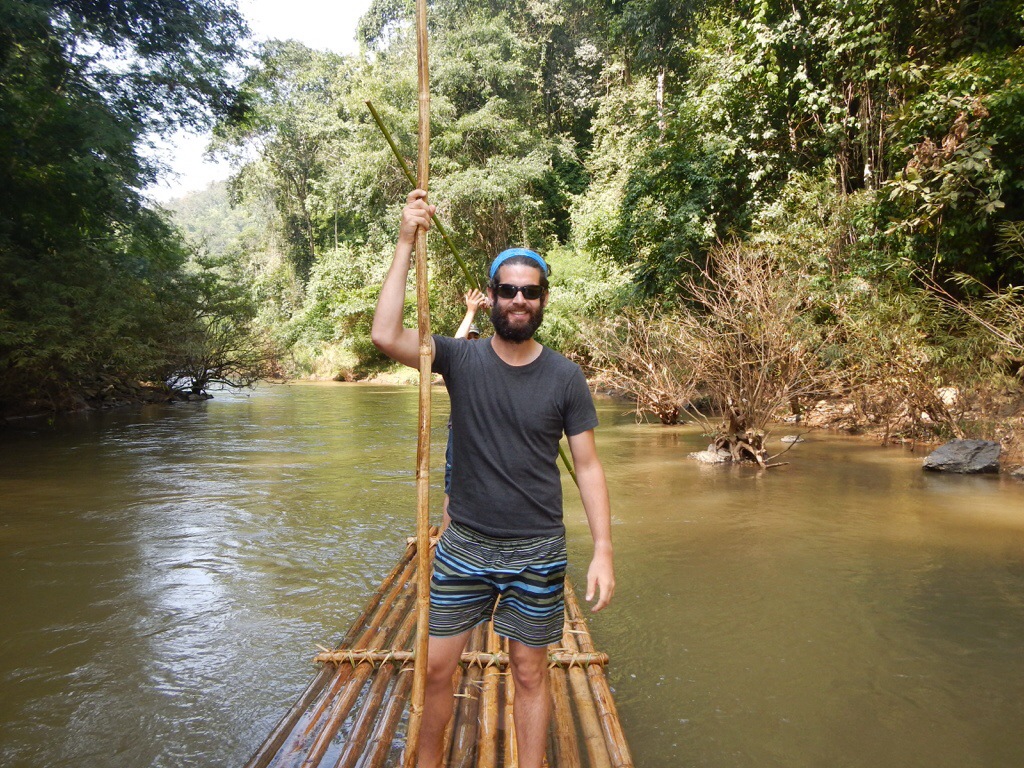
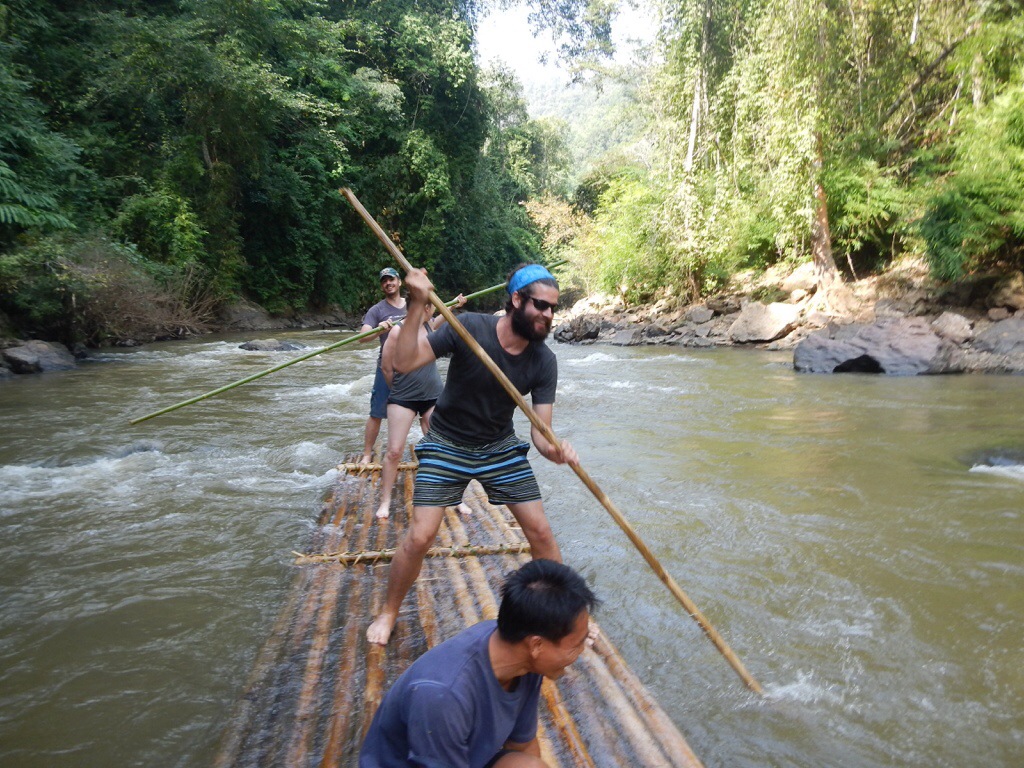
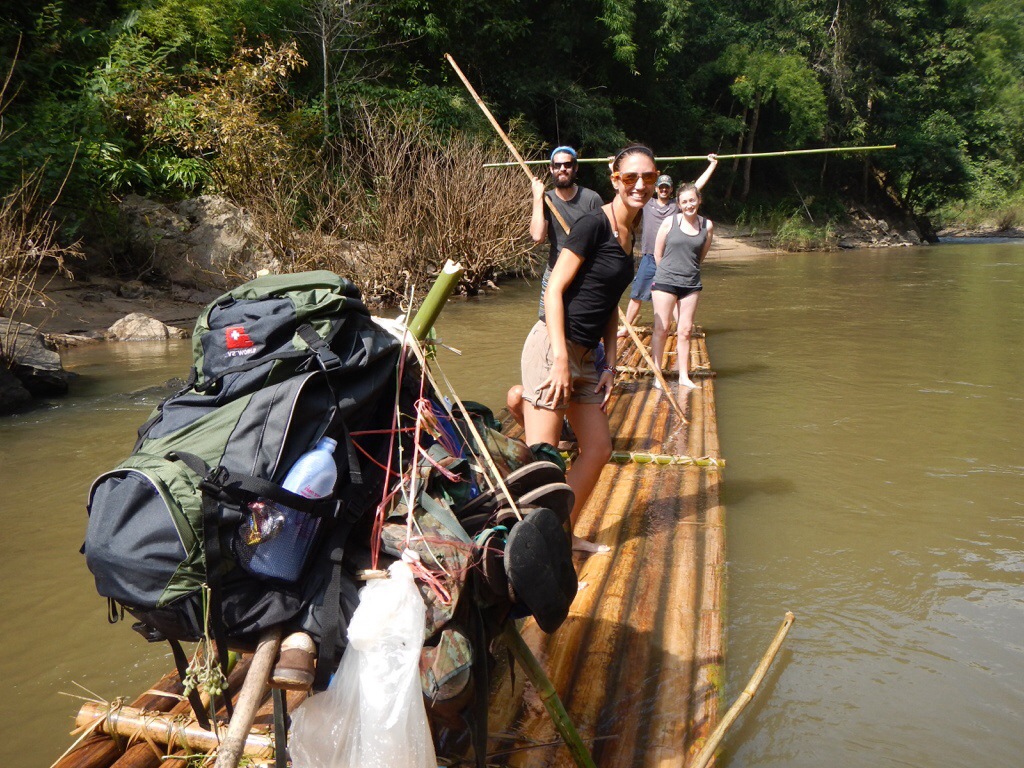
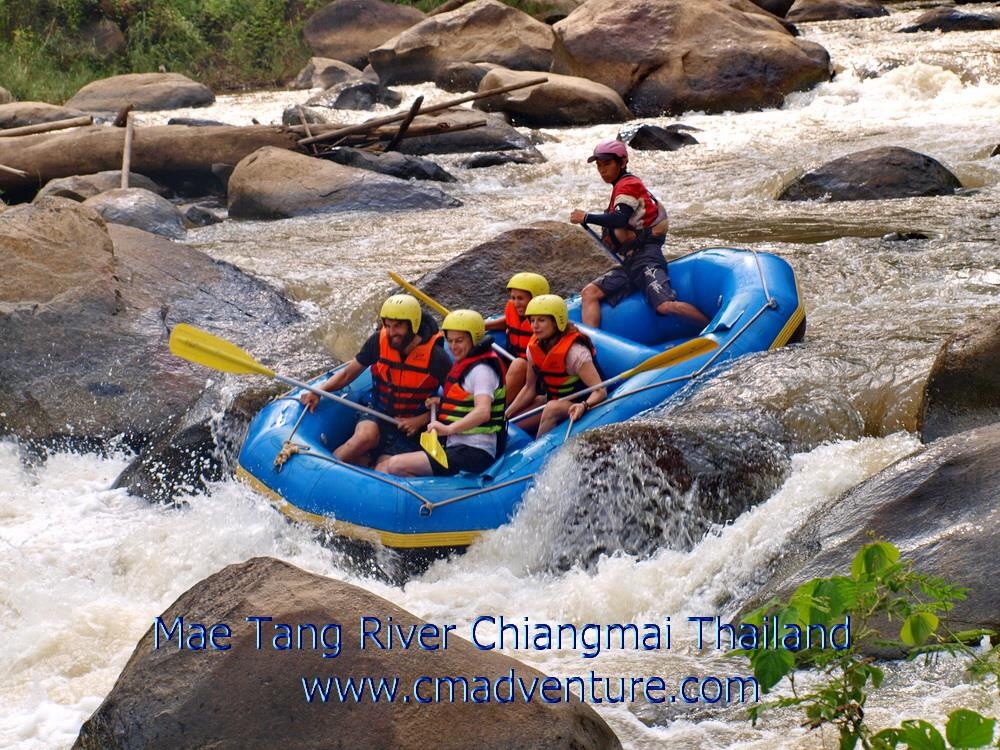
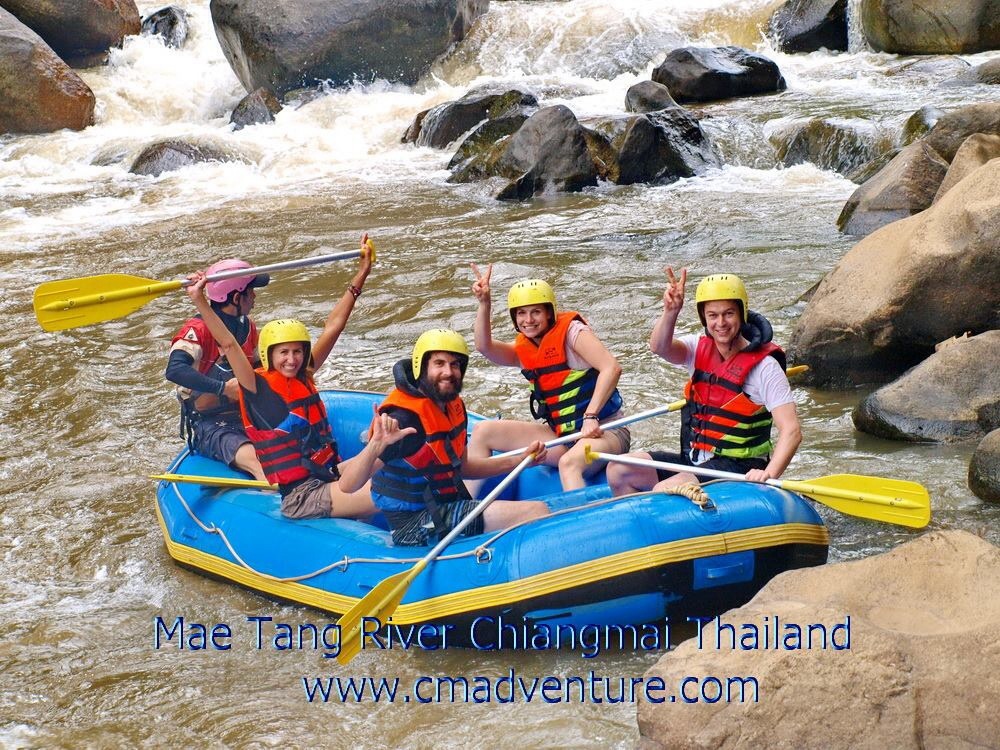
Sounds like a great time!!
It was awesome.
I’m a bit confused about the elephant abuse. You had some other elephant contact… riding, washing, etc… were those elephants abused?
Your trek sounds great… nice “multi-sport” combo of activities.
Yes, the other times we were interacting with elephants it didn’t seem like they were treated in the best of conditions. Minders with pointed poles, or owners who chained them up at night, and drivers who whipped them were commonplace. It was uncomfortable at times, but on our trek it was completely different (at least from what we could tell).